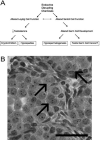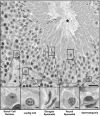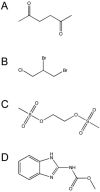Male reprotoxicity and endocrine disruption
- PMID: 22945574
- PMCID: PMC3650643
- DOI: 10.1007/978-3-7643-8340-4_11
Male reprotoxicity and endocrine disruption
Abstract
Mammalian reproductive tract development is a tightly regulated process that can be disrupted following exposure to drugs, toxicants, endocrine-disrupting chemicals (EDCs), or other compounds via alterations to gene and protein expression or epigenetic regulation. Indeed, the impacts of developmental exposure to certain toxicants may not be fully realized until puberty or adulthood when the reproductive tract becomes sexually mature and altered functionality is manifested. Exposures that occur later in life, once development is complete, can also disrupt the intricate hormonal and paracrine interactions responsible for adult functions, such as spermatogenesis. In this chapter, the biology and toxicology of the male reproductive tract is explored, proceeding through the various life stages including in utero development, puberty, adulthood, and senescence. Special attention is given to the discussion of EDCs, chemical mixtures, low-dose effects, transgenerational effects, and potential exposure-related causes of male reproductive tract cancers.
Figures



References
-
- Barker DJ. Maternal nutrition, fetal nutrition, and disease in later life. Nutrition. 1997;13:807–813. - PubMed
-
- Painter RC, de Rooij SR, Bossuyt PM, Simmers TA, Osmond C, Barker DJ, Bleker OP, Roseboom TJ. Early onset of coronary artery disease after prenatal exposure to the Dutch famine. Am J Clin Nutr. 2006;84:322–327. quiz 466-327. - PubMed
Publication types
MeSH terms
Substances
Grants and funding
LinkOut - more resources
Full Text Sources
